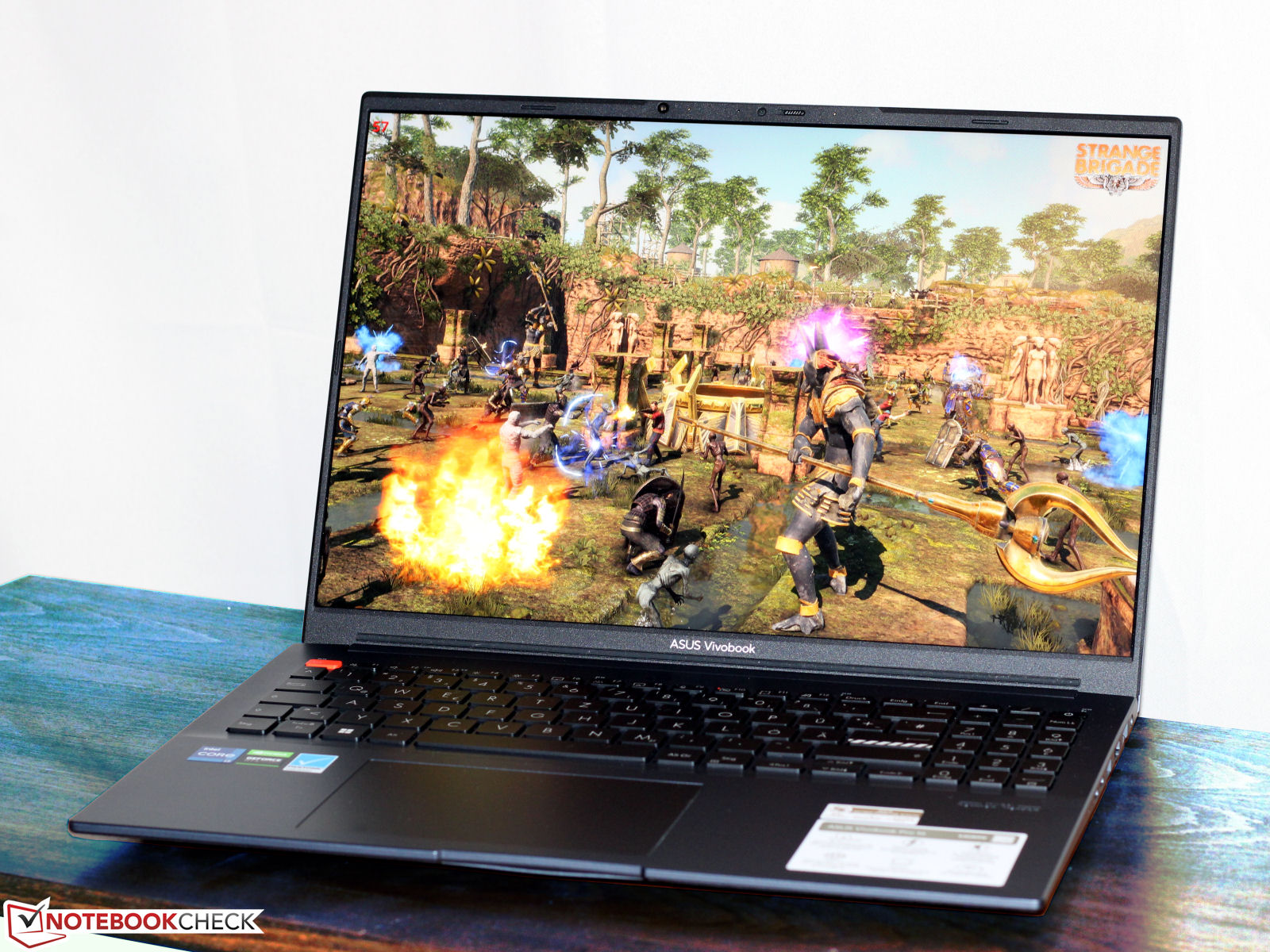
Video and photo editing, streaming, rendering and gaming: These all belong to the VivoBook Pro 16’s core strengths. Its Core 7-12700H and GeForce RTX 3050 Ti Laptop deliver all the necessary power – both components consistently run with high clock rates. Although, it isn’t quite used to its full potential, as the RAM only runs in single-channel mode.
Asus’ VivoBook Pro 16 is a laptop fit for gamers and creators who don’t place too much importance on having the newest hardware.
The laptop only heats up a little at load, but it can get very loud – or too loud, even. A positive: The device offers a whisper mode which can lower the noise emissions the laptop produces at the expense of its performance – which can at least allow for a little more relaxed working.
Its compact build, relatively small weight (1.9 kg) and decent runtimes (WLAN: 7:15 h) make the VivoBook quite a mobile device. A positive: The battery can be charged using a USB-C power supply (min. 65 watts, 20 V) – both USB-C ports support power delivery. You don’t have to continue using the proprietary power supply included.
Our test sample doesn’t have an OLED screen, but it is generally available within the VivoBook Pro 16 series. You shouldn’t miss it: The installed IPS screen (16 inches, 2,560 x 1,600 pixels) in 16:10 format impresses with its brightness, good contrast, stable viewing angles, short reaction times, great color depiction and excellent color space coverage.
Alternatively, you could take a look at the Dell Inspiron 16 Plus 7620: With comparable performance, it offers considerably better runtimes. A budget-friendly alternative is the Acer Swift X 16, which delivers lower graphics performance – but it can offer very good runtimes and a price of around $1,000.
Source link
 notebook.co.id informasi dan review notebook laptop tablet dan pc
notebook.co.id informasi dan review notebook laptop tablet dan pc